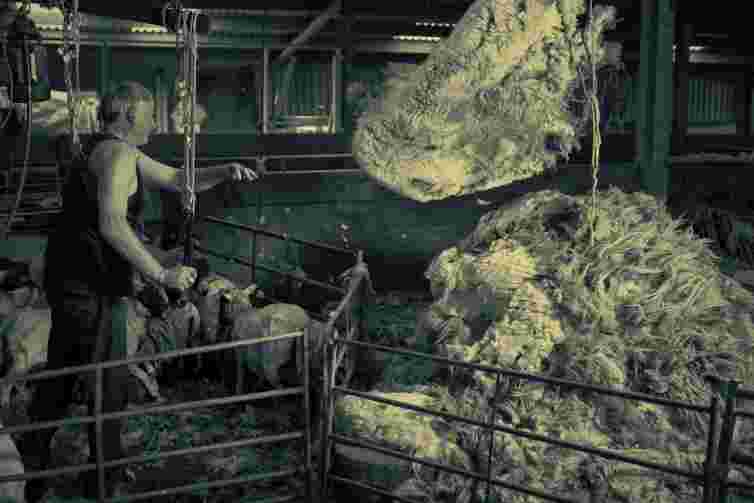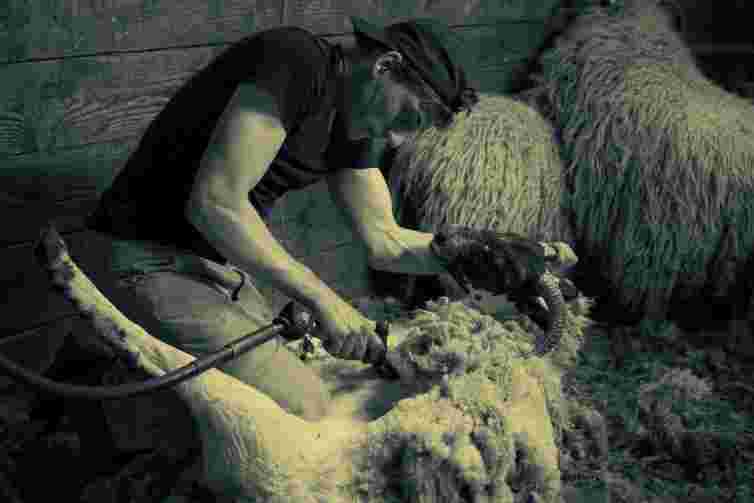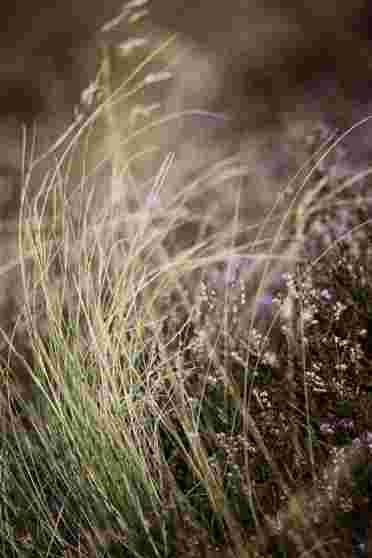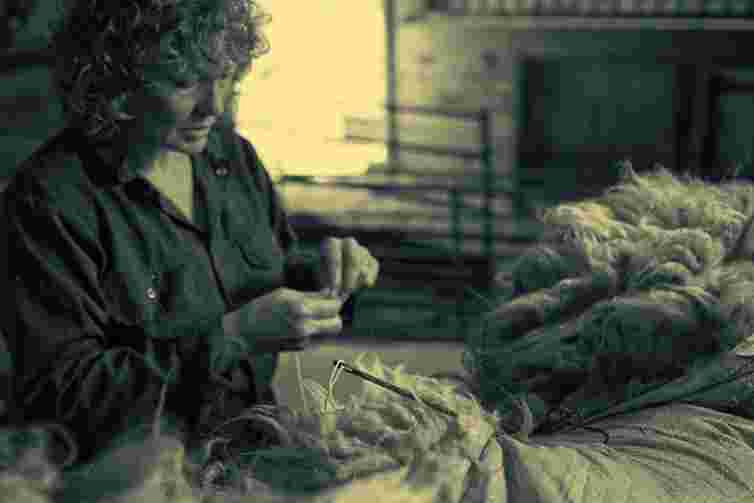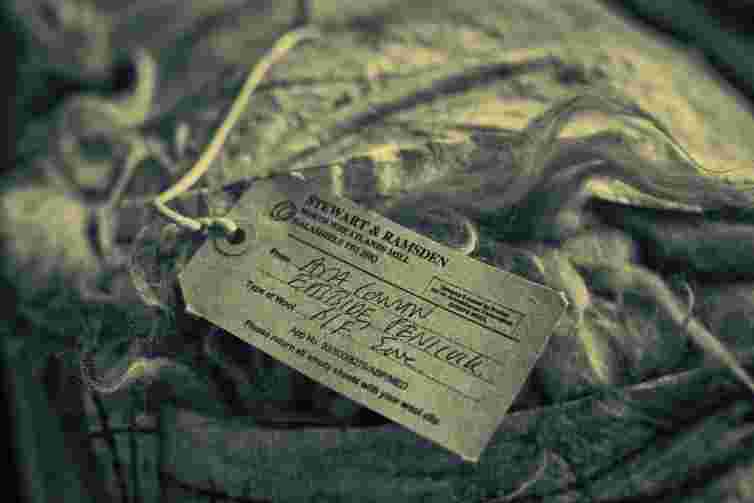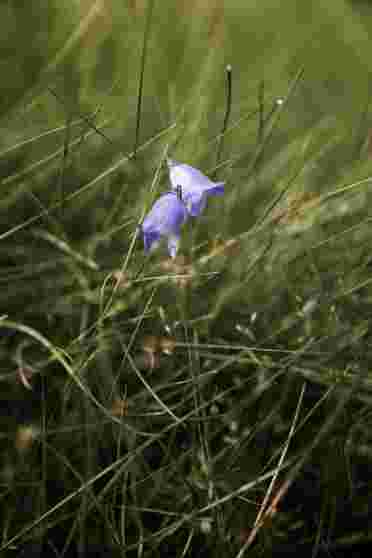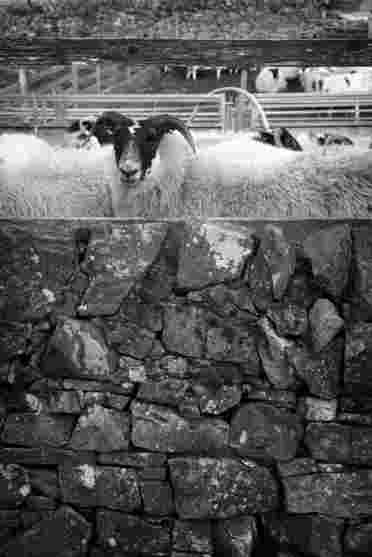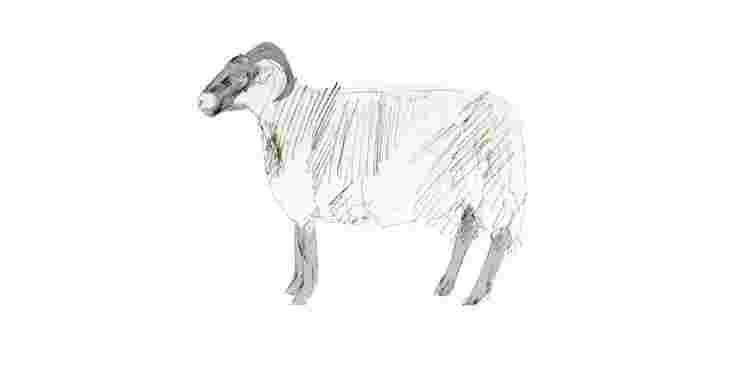June through July | Clipping on the Farm
Shearing is a skilled art learned over many years of patience and practice. Done properly it is almost like a dance allowing the shepherd to keep the sheep off balance while they carefully move the clippers in a memorised, age-old sequence. Cutting through the new wool or "rise", the shearer removes the fleece in one piece with no harm to the animal.
We start in June with the 400 hoggs (one year old sheep) being clipped for the first time. By that time they will have grown an early "rise" - a thick layer of new wool between the skin and the old wool. We need to wait until July for the ewes to produce this rise as their lambs at foot have made significant demands on their wool growing resources.
Three bags full
My job is to roll and pack the fleeces into giant wool sacks or 'sheets'. The fleeces are laid out on a table before the sides are folded in, rolled and then tucked to allow for ease of sorting into different grades later. The sheets are stitched shut, labeled and sent off to the British Wool Marketing Board in Galashiels.
Galashiels has a long history for grading and processing wool. Although most of the woollen mills have now gone, the wool still gets graded and baled here. The first process at the wool board is sorting. Each fleece is sorted into grades by people who have developed an amazing sense of touch. They quickly sort the fibres according to fineness, length, and colour. The finer and longer the fibre the better the grade.
Wonder Wool
We are always amazed by the multitude of differing colours and tones in the wool our hill sheep produce. The black and white image is an extreme example from our completely black (Scottish Blackface) sheep we have on the farm. But the soil and landscape influence more subtle colouring as well. The natural pigments wash out mostly with white wool usually what the market demands for dyes and colouring to be added easily. Black wool however is now our most valuable wool crop for weavers looking for natural colour ways. How times change.
Blackface fleeces like ours have fairly course wool (a low grade) and it is used mainly for natural carpeting, mattresses and eco-insulation for homes. Wool is now more important than ever. With an increasing awareness of microfibre and plastic pollution, wool provides an important and natural, biodegradable alternative. Check out Campaign for Wool.
Interested in slow fashion? Believe fashion should be produced in a sustainable way? Check out Wool And The Gang, started by two Central Saint Martins textile design graduates, who are passionate about changing the way fashion is created and consumed using wool!

